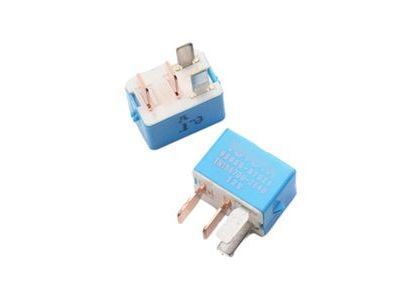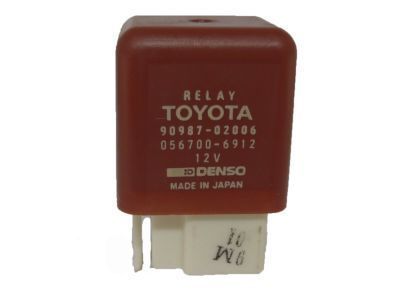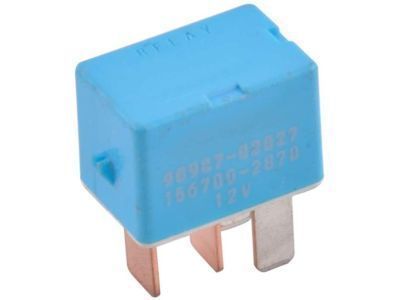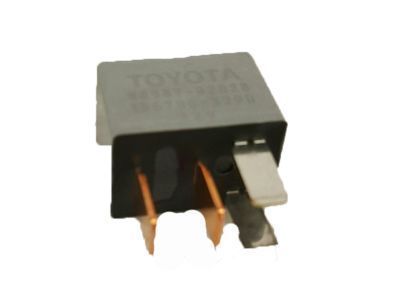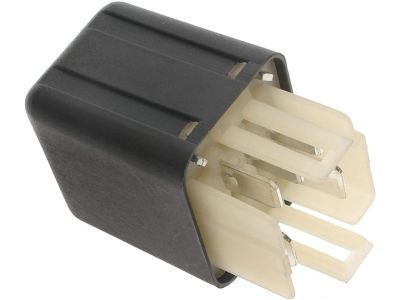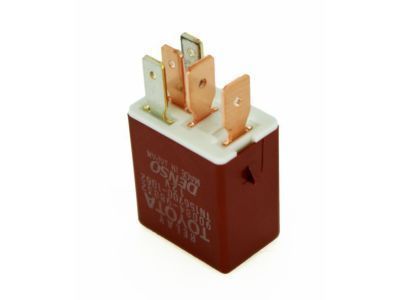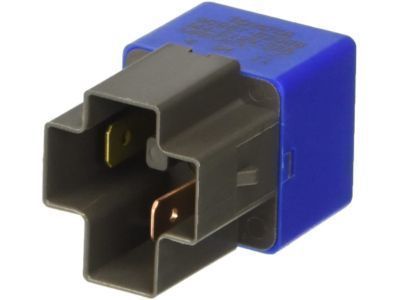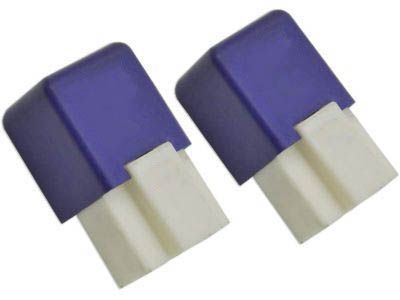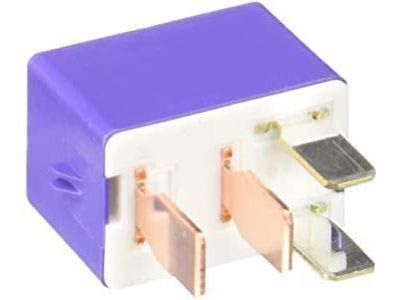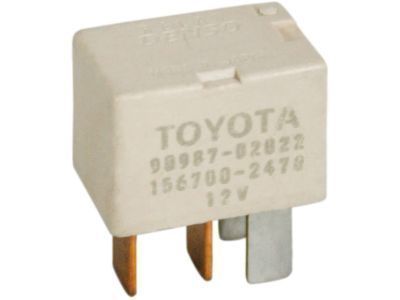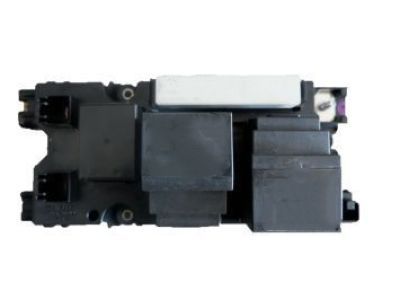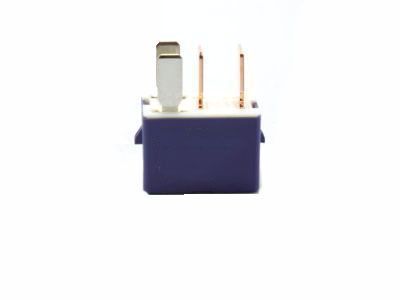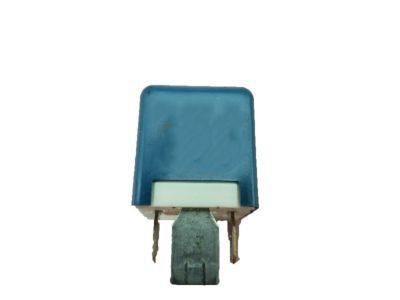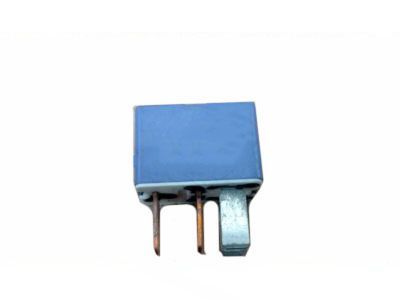×
- Live Chat
- 1-888-905-9199


My Garage
My Account
Cart
Genuine Toyota Highlander Relay
Wire Relay- Select Vehicle by Model
- Select Vehicle by VIN
Select Vehicle by Model
orMake
Model
Year
Select Vehicle by VIN
For the most accurate results, select vehicle by your VIN (Vehicle Identification Number).
36 Relays found
Toyota Highlander Relay Assembly
Part Number: 90987-02006$16.04 MSRP: $22.42You Save: $6.38 (29%)Ships in 1-3 Business DaysToyota Highlander Relay
Part Number: 90987-02027$21.90 MSRP: $30.60You Save: $8.70 (29%)Ships in 1-3 Business DaysToyota Highlander Relay Assy, Cooler
Part Number: 90987-02028$78.27 MSRP: $110.33You Save: $32.06 (30%)Ships in 1 Business DayToyota Highlander Relay
Part Number: 90987-04002$16.58 MSRP: $23.18You Save: $6.60 (29%)Ships in 1-3 Business DaysToyota Highlander Relay, Acc
Part Number: 90080-87024$64.82 MSRP: $91.37You Save: $26.55 (30%)Ships in 1-3 Business DaysToyota Highlander Relay, Acc
Part Number: 90084-98032$55.36 MSRP: $77.38You Save: $22.02 (29%)Ships in 1-3 Business DaysToyota Highlander Relay
Part Number: 90987-02009$41.52 MSRP: $58.04You Save: $16.52 (29%)Ships in 1-3 Business DaysToyota Highlander Relay Assembly, Starter
Part Number: 28300-10020$70.79 MSRP: $99.79You Save: $29.00 (30%)Ships in 1-2 Business DaysToyota Highlander Relay
Part Number: 90987-04004$55.36 MSRP: $77.38You Save: $22.02 (29%)Ships in 1 Business DayToyota Highlander Relay
Part Number: 90987-02025$64.82 MSRP: $91.37You Save: $26.55 (30%)Ships in 1-3 Business DaysToyota Highlander Relay Assembly, Starter
Part Number: 28300-0A010$71.10 MSRP: $100.22You Save: $29.12 (30%)Ships in 1-2 Business DaysToyota Highlander Relay, Acc
Part Number: 90987-02022$78.27 MSRP: $110.33You Save: $32.06 (30%)Ships in 1-2 Business DaysToyota Highlander Relay Assembly
Part Number: 90080-87025$64.82 MSRP: $91.37You Save: $26.55 (30%)Ships in 1 Business DayToyota Highlander Relay Assy, Hybrid Vehicle
Part Number: G3840-48010$382.04 MSRP: $483.09You Save: $101.05 (21%)Ships in 1-3 Business DaysToyota Highlander Relay, Air Conditioner Water Pump
Part Number: 90987-04010$64.82 MSRP: $91.37You Save: $26.55 (30%)Ships in 1 Business DayToyota Highlander Relay Assembly, Starter
Part Number: 28300-0A011$71.10 MSRP: $100.22You Save: $29.12 (30%)Ships in 1-3 Business DaysToyota Highlander Relay, Skid Control
Part Number: 88263-21010$63.00 MSRP: $88.81You Save: $25.81 (30%)Ships in 1 Business DayToyota Highlander Relay
Part Number: 90987-04003$17.89 MSRP: $24.99You Save: $7.10 (29%)Ships in 1-3 Business DaysToyota Highlander Relay Assembly, Starter
Part Number: 28300-28010$71.10 MSRP: $100.22You Save: $29.12 (30%)Ships in 1-3 Business Days
| Page 1 of 2 |Next >
1-20 of 36 Results
Toyota Highlander Relay
If you are in demand for superior quality and affordable OEM Toyota Highlander Relay, then shop with us! We own a wide range of the reduced-priced genuine Toyota Highlander Relay. You can purchase in confidence as all parts come with a manufacturer's warranty. Any issues with our products? No need to worry as we have a hassle-free return policy to guide you every step of the way.
Toyota Highlander Relay Parts Questions & Experts Answers
- Q: What is the general information about relays and how to test them on Toyota Highlander?A: In the vehicle, various electrical accessories for example the fuel injection system, horn, starter, and fog lamps all employ relays to switch the electric signal to the component. It is a switch that applies a low current control circuit to turn on or off a high current power circuit. A faulty relay which is used in the manufacture of this component will not enable the desired functioning. Most of the relays are usually fixed on the engine compartment fuse/relay box while the special relays are fixed on the underhood box at right fender side and the relays of the ABS are usually fixed on the underhood relay box at the left side of the radiator. If a faulty relay is believed to be present, it can be replaced and some place checked while other specify can be checked by a dealer service department or a repair shop. Where relays are of the type that must be replaced as a unit because they are out of tolerance, the circuit controlled by that relay is often noted on the top of the relay or on a decal or imprint on the inside cover of the relay box. The four fundamental types available are the NO and the NC forms, with some types of relays providing a single or double circuit when activated. Many relays have two or more pins for the control circuit which is connected to the relay coil and other pins for the power circuit all of which are internally connected when the control circuit is energized. It's possible for some of the relays to be painted to distinguish between the control and power circuit terminals; the unmarked types can be tested using a switch across the power circuit terminals with an Ohmmeter to check for continuity. A normal four-terminal normally open relay needs an ohmmeter to show continuity when the relay is energized and no continuity when it is not energized. Connect one end of a fused jumper wire connecting one terminal of the control circuit to the positive terminal of the battery and the other end of the fused jumper wire to the other terminal of the control circuit to the ground and the relay should click and continuity should be indicated on the meter. If the relay is found wanting in the test it subjects to, it was supposed to be replaced.
